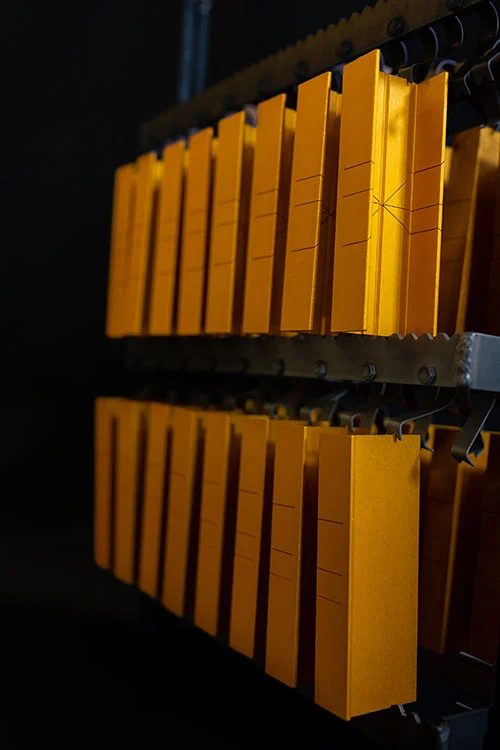What is Anodizing?
Anodizing is an electrochemical process that forms a protective oxide coating on the base metal (usually aluminum. This layer is known as an anodic oxide finish. Unlike other surface treatments, oxide layers created by this process are integrated into the underlying metal substrate. This eliminates the possibility of peeling or chipping that experience from painting the metal.
When applied to aluminum, the process produces a layer of aluminum oxide. This layer comes from the aluminum substrate. It is essential to remember that anodizing metal alters the size of the original metal component. This is because some of the metal substrate is converted into an oxide layer.
Manufacturers are aware of the need for the anodizing process. They take this into account when creating components. This allows the anodizing process to be completed later.The aluminum acts as the anode. It causes oxygen ions to be released from the electrolyte. These ions are then combined with aluminum atoms on the surface of the component or part undergoing anodization. Essentially anodizing is the enhancement of a naturally occurring phenomenon in aluminum through carefully controlled oxidation process.

What are Anodized Metals Used For?
Anodized metals are a key part of our lives and are used in many everyday items. They are used in cars, tools, building supplies, cookware, surgical equipment, and planes. These items help us travel and build cities, cook our food, and even save lives.
Not to mention that many of the small consumer goods you buy everyday contain an anodized aluminum part or component.
What is the Purpose of Anodizing?
Certain operating environments can damage metal, such as aluminum. This can occur when exposed to high humidity, high temperatures, acids, or salts. Exposing certain metals to these elements can cause these metals to fail in use. Failures like this increase the cost of maintenance and component replacements.
Several metal treatment processes were developed to preserve metals in harsh environments. Anodizing is one of these methods. This helps to minimize or eliminate the negative effects of the operating environment.
The process adds many benefits to the metal substrate. These include corrosion resistance, heat tolerance, and improved durability. Anodizing is broken down in three different types or techniques.
Types of Anodizing Processes and Uses
Chromic Acid Anodize (also referred to as Type I Anodizing)
Chromic acid anodizing is used primarily to protect important joints and structures. Considering the coating’s thickness, which is normally between 0.08 and 0.2 mils, the corrosion resistance is very good. The oxide film formed is softer and less porous than those made via type II and type III. It is also produced without significant material fatigue loss.
However, the film produced is easily degraded, and the color is a light opaque gray. When this film is sealed with a dichromate seal, it develops a greenish hue.Please note: Clear and Colored Coatings does not offer this type of anodizing.
Sulfuric Acid Anodize (also referred to as Type II Anodizing)
This is the most used anodizing techniques of all three. This is process is best suited for applications where the component needs hardness and abrasion resistance. Sulfuric Acid Anodizing has a distinct advantage. It allows coloring to be applied to the metal during the anodizing process, resulting in a new look for the component.
To learn more about this process, check out our Sulfuric Acid Anodizing page.
Hard Coat Anodize (also referred to as Type III Anodizing)
Hard anodizing or hard coat anodizing is a process used to improve aluminum components. It increases their thermal and dialectic properties, as well as their wear and corrosion resistance. Type III also allows for the capacity to retain lubricants. The thickness of the oxide layer is more than both type I and type II.
To learn more about this process, check out our Hard Coat Anodizing page.
Want to see how Clear and Colored Coatings can help you?
